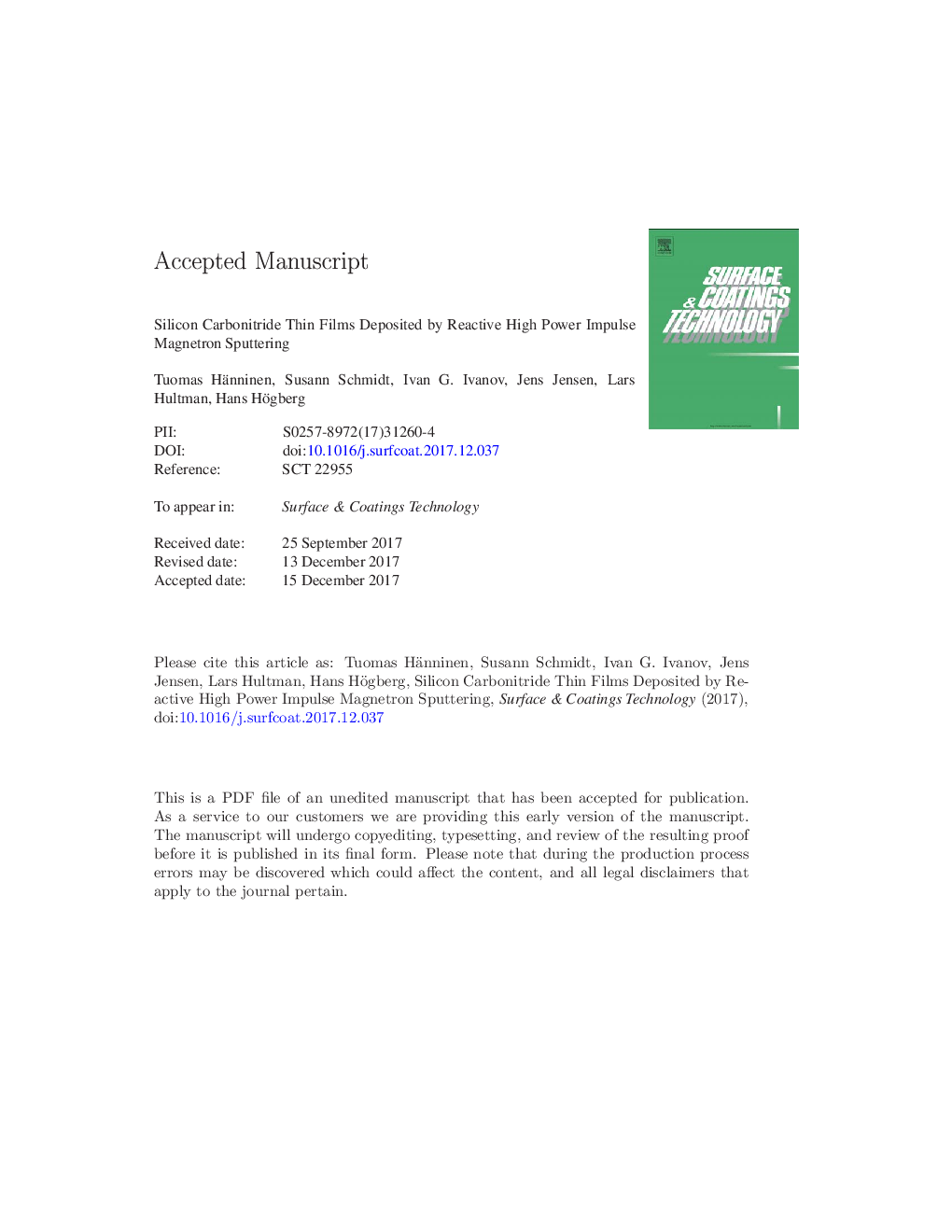| Article ID | Journal | Published Year | Pages | File Type |
|---|---|---|---|---|
| 8024444 | Surface and Coatings Technology | 2018 | 41 Pages |
Abstract
Amorphous silicon carbonitride thin films for biomedical applications were deposited in an industrial coating unit from a silicon target in different argon/nitrogen/acetylene mixtures by reactive high power impulse magnetron sputtering (rHiPIMS). The effects of acetylene (C2H2) flow rate, substrate temperature, substrate bias voltage, and HiPIMS pulse frequency on the film properties were investigated. Low C2H2 flow rates (<10 sccm) resulted in silicon nitride-like film properties, seen from a dense morphology when viewed in cross-sectional scanning electron microscopy, a hardness up to â¼22 GPa as measured by nanoindentation, and Si-N bonds dominating over Si-C bonds in X-ray photoelectron spectroscopy core-level spectra. Higher C2H2 flows resulted in increasingly amorphous carbon-like film properties, with a granular appearance of the film morphology, mass densities below 2 g/cm3 as measured by X-ray reflectivity, and a hardness down to 4.5 GPa. Increasing substrate temperatures and bias voltages resulted in slightly higher film hardnesses and higher compressive residual stresses. The film H/E ratio showed a maximum at film carbon contents ranging between 15 and 30 at.% and at elevated substrate temperatures from 340 °C to 520 °C.
Related Topics
Physical Sciences and Engineering
Materials Science
Nanotechnology
Authors
Tuomas Hänninen, Susann Schmidt, Ivan G. Ivanov, Jens Jensen, Lars Hultman, Hans Högberg,
